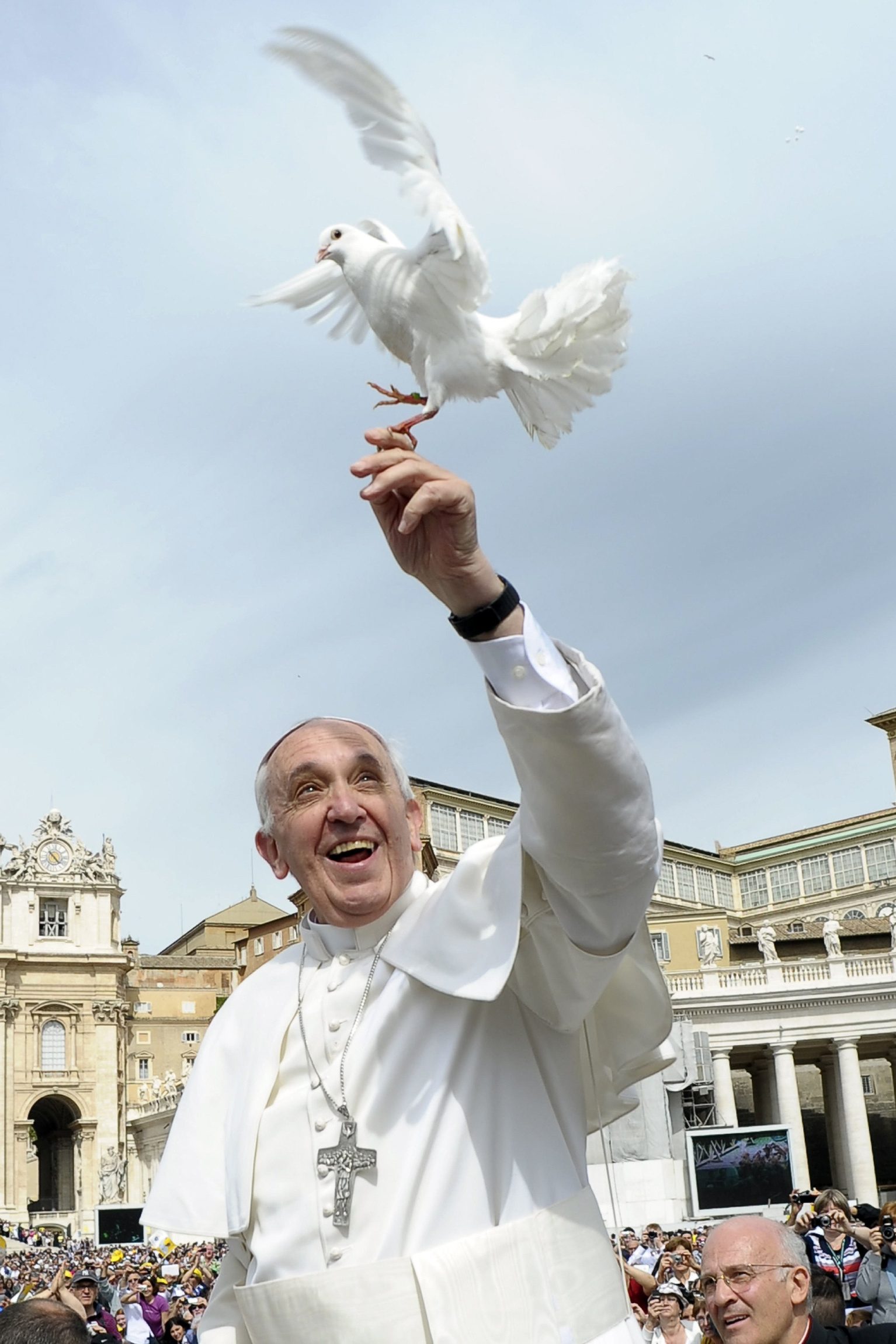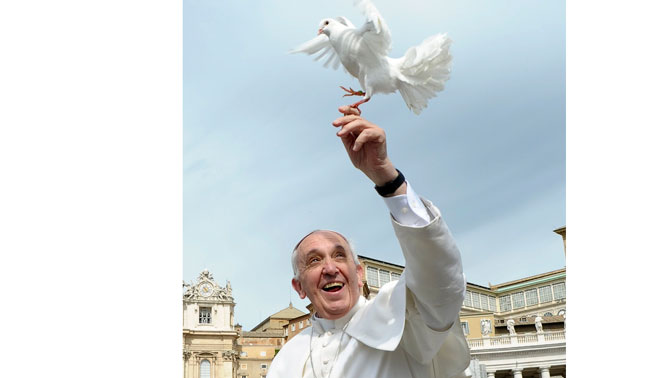“Man, if you have to ask what it is, you’ll never know.”
—Louis Armstrong, on jazz
Everybody talks about it, most everybody seems to like the idea, but only a few appear to be able to explain what it’s all about.Enter the New Evangelization.
So let’s get to the heart of it. The New Evangelization is:
1) Knowing the faith.
2) Living the faith.
3) Sharing the faith.
And, according to Greg Willits, writing in Catholic Digest, that’s it in a very small nutshell—a nice memory trigger.
But that’s not all of it. When the subject is bringing souls to Christ—the ultimate purpose of the Catholic Church—it’s difficult to reduce it to a bumper sticker or an elevator pitch.
The Church has always placed evangelization front and center, says Father Gerald Horan, and has always considered it to be a lifelong process, a deepening of faith and understanding over the course of time. However, in the modern world—in Europe, America and the Western world in particular—growth in the faith often ends when many Catholics leave the Church, in many instances at a young age. It is to those distant, alienated or secularized Catholics that much of the New Evangelization is directed.
“The whole notion of the New Evangelization was first suggested by Pope John Paul II,” says Father Gerald, the Episcopal Vicar for Faith Formation for the Diocese of Orange. “And Pope Francis is bringing a much wider view of this evangelization forward. I think the driving concern in the initial references we find to the New Evangelization were toward the re-Christianization of Europe and really all of Western culture. The percentage of people who list themselves as Catholic and the percentage of people who show up in church on Sunday morning—there’s quite a disparity.
“A practicing Catholic is now [considered to be] someone who goes to Mass at least once a month, not once a week, as the Church dictates. We’re witnessing a declining level of commitment to what we call regular practice of the faith. The New Evangelization was really conceptualized as more of a means of offering a deeper commitment and deeper roots to those who already call themselves Christian. It wasn’t as much going out to people who had never heard the Gospel as it was helping people who had heard the Gospel or who claimed the name Christian to take that to deeper levels. That’s where the real focus of the New Evangelization is.”
It takes only a handful of disconcerting statistics to illustrate why the New Evangelization is an idea whose time has come:
- One out of every three adult Americans who were raised Catholic have left the Church.
- Catholicism has lost more people to other religions or to no religion at all than any other single religious group.
- If these ex-Catholics were to form a single church, they would be the second largest church in the nation.
- Of the 30 percent of baptized Catholics who leave the Church, 40 percent do so before age 18 and another 30 percent leave before age 25.
“In religious education classes, enrollment is highest in grades 1 through 3. Then, once they get their sacraments, between grades 3 and 8, enrollment is slashed 60 percent,” says Father Gerald. “Only 40 percent of young people today who are introduced to the sacramental life continue in religious formation. We’re sending people out into a very adult world, where they have to make very sophisticated decisions about complicated moral matters, with a second-grade understanding of their faith.”
Still, the alienated likely will not have their curiosity piqued by an approach that emphasizes what the Church is against. Which is why Father Gerald points to Pope Francis’ apostolic exhortation “Evangelii Gaudium” as a kind of blueprint for the newest manifestations of the New Evangelization.
“Francis has spoken in ‘Evangelii Gaudium’ in a much wider way about evangelization and about the things and experiences and behaviors—the spine of the whole thing—and how we can take the joy of the Gospel to others and about how we can make our message welcoming and appealing,” says Father Gerald.
He emphasizes that the title “New Evangelization” doesn’t negate the Church’s evangelical efforts in the past, but rather emphasizes the eternal freshness of the Gospel message.
“God works with each of us on our own time line,” says Father Gerald. “What’s new is that it’s not a remediation but a new fervor and a new manifestation of the spirit, a new drive within us. The good news is always new, or should be, which is why we read it every Sunday at Mass. Because it’s the living Word it hits us in a new moment in a new way. So what’s new is that it’s new in our moment.”
All of this may sound very good indeed to many Catholics, save for one element: evangelization. It’s a word, says Father Gerald, that more than a few Catholics find discomfiting, in large part because of the word’s close association with the worst excesses of televangelism and aggressive proselytizing. But, says Father Gerald, effective individual evangelism need not be theatrical.
“It doesn’t have to be going out and tackling strangers,” he says. “It can be something as simple as wearing a cross—not being afraid to wear a cross.
In simple acts of welcoming and kindness you are evangelizing and you’re witnessing that the Gospel has made a difference in your life. And by that difference you can invite others to the same set of values, the same faith, and the same manifestation of God’s presence.” occ


